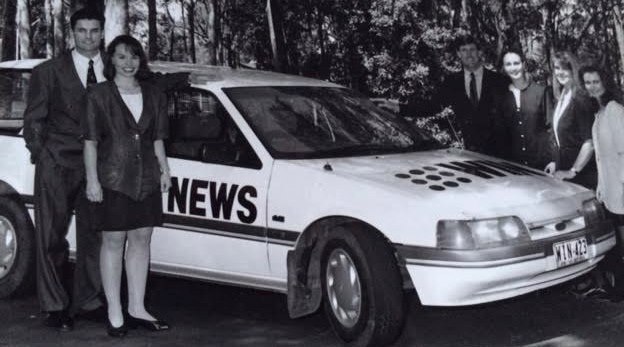A tribute to WIN’s Orange and Wagga newsrooms, from the journo who set them up
Dr Neryl East set up WIN’s Orange and Wagga Wagga newsrooms in the early ’90s. Those newsrooms will close next week. Here, she reflects on what it was like to build local bulletins from scratch, and what the latest blow for regional news means in the bigger picture.
This week‘s decision by the WIN Network to axe its news services in Wagga, Orange, Dubbo, Albury and Wide Bay is the full stop at the end of a sentence that began more than 25 years ago.
While the end of WIN’s local news is a huge blow to each of those communities, the decisions about Orange and Wagga struck a particular chord for me. I set up those news services in the early 1990s.

WIN’s Wagga news staff in 1993
It was a new frontier. The federal government‘s aggregation policy, which for the first time allowed local TV stations to compete against each other in bigger markets, was still only a few years old.


Not sure if I am quiet as pessimistic about the future of local regional television news services at a set time as the writer.
With regards to Orange and Dubbo, in the end, all three commercial television stations were telecasting local news -perhaps an over supply for a regional market?.
The incumbent in Orange/Dubbo, Prime News, still delivers good ratings as does Nine news in Newcastle etc. Admittedly, the audience for news is tending to skew towards an older demographic, but still one of interest to advertisers. It will be interesting to see if the news services in the future, can adapt to attract younger viewers,that to me is the real challenge.
By the way, in the US, local news on television is still very much alive and well.
Peter Menton
Ahhhh … I just love the diversity and choices we get. Not.
Excellent piece Neryl – balanced, thoughtful and you’ve gotten to the nub of the issue. In many ways it’s a miracle those services have survived as long as they did given the budgetary pressures. I bit the bullet and decided to leave WIN in 2000, cause the battle to sustain a credible, quality news service in Canberra way back then was being compromised by those who had to make a buck! It was a painful decision at the time but the best thing I ever did. There really is a fulfilling life outside mainstream journalism (as Neryl knows). All that being said, I had the opportunity to leave the bustle of the newsroom at the time of my choosing. The staff at WIN being told ‘time’s up’ aren’t so lucky! Thinking of them this week and hope they are as lucky as I have been post life in a newsroom.
I was News Director of Prime TV in Canberra at the same time Jeremy was running WIN news. I bailed out a few years before Jeremy (for much the same reasons) and remember telling management that if they weren’t prepared to take news seriously, they should shut it down. Some after I left they did just that. I too moved to a fulfilling career outside journalism. If it’s any consolation to those who have just lost their jobs, be assured there is life after regional television. Just be prepared to move outside your comfort zone.
Great advice Ian!!!
This sounds like a golden opportunity for those involved to set up an online service for the viewers who will miss out. A go fund me account to finance this is an idea. If free to air is prepared to sacrifice regional TV then an online channel would take some of their market away.